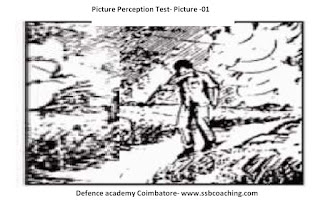Leadership skill- ssb tips by www.ssbcoaching.com
ssb coaching

 Keep track of your original ideas by maintaining an idea notebook. Few people have such uncluttered minds that they can recall all their past flashes of insight,especially when they need them.
Keep track of your original ideas by maintaining an idea notebook. Few people have such uncluttered minds that they can recall all their past flashes of insight,especially when they need them.
 Stay current in your field and hunt for ideas. Having current facts at hand gives you the raw material to link information creatively. Creativity often takes the form of associating ideas that were previously unassociated.
Stay current in your field and hunt for ideas. Having current facts at hand gives you the raw material to link information creatively. Creativity often takes the form of associating ideas that were previously unassociated.
 Adopt a risk-taking attitude when you find creative solutions. You will inevitably fail a few times, not to worry. One or two innovative ideas per year is sufficient to develop a reputation as a creative problem solver.
Adopt a risk-taking attitude when you find creative solutions. You will inevitably fail a few times, not to worry. One or two innovative ideas per year is sufficient to develop a reputation as a creative problem solver.
 Develop a creative mental set. Allow your foolish side to emerge. Creativity requires a degree of intellectual play fullness and immaturity. Many creative people are accomplished practical jokers.
Develop a creative mental set. Allow your foolish side to emerge. Creativity requires a degree of intellectual play fullness and immaturity. Many creative people are accomplished practical jokers.
 Be curious about your environment. The person who routinely questions how things work, or why they do not work, is often likely to have an idea for improvement.
Be curious about your environment. The person who routinely questions how things work, or why they do not work, is often likely to have an idea for improvement.
 Sometimes to make decisions, intution is used. Intuition is a key personal trait many leaders rely on to make good decisions. It is an experience based way of reasoning in which weighing and balancing evidence is done automatically. To develop intuition, you need to
Sometimes to make decisions, intution is used. Intuition is a key personal trait many leaders rely on to make good decisions. It is an experience based way of reasoning in which weighing and balancing evidence is done automatically. To develop intuition, you need to
 Effective leaders make frequent use of analogies and metaphors. An analogy draws attention to the similarity between the features of two things so people can make a comparison. "Our company is like Microsoft in its early days." A metaphor is also a comparison, but it is less obvious than an analogy. The comparison is between two objects not ordinarily associated with each other. Comparing our "company to a tiger" is a metaphor.What counts is whether the comparison grabs attention.Members of the team are inspired by analogies and metaphors that are relevant to the challenges that they face.
Effective leaders make frequent use of analogies and metaphors. An analogy draws attention to the similarity between the features of two things so people can make a comparison. "Our company is like Microsoft in its early days." A metaphor is also a comparison, but it is less obvious than an analogy. The comparison is between two objects not ordinarily associated with each other. Comparing our "company to a tiger" is a metaphor.What counts is whether the comparison grabs attention.Members of the team are inspired by analogies and metaphors that are relevant to the challenges that they face.
 Use of anecdotes and stories. People like to hear stories. Anecdotes help build up corporate culture. Team members can remember a principle or policy better if it is accompanied by an anecdote. For example: A receptionist at IBM denied admission to the company chairman because he was not wearing a security badge. Instead of firing the young woman, Thomas Watson, the then IBM chairman, praised her devotion to duty.
Use of anecdotes and stories. People like to hear stories. Anecdotes help build up corporate culture. Team members can remember a principle or policy better if it is accompanied by an anecdote. For example: A receptionist at IBM denied admission to the company chairman because he was not wearing a security badge. Instead of firing the young woman, Thomas Watson, the then IBM chairman, praised her devotion to duty.
The skill set required for becoming a leader consists of acquiring creative skills, communication skills, motivating skills and team working skills.
- Creative Skills Leadership is about creative thinking. Here are some things that you can do to foster creative problem solving.
- Immerse yourself - get experience.
- Focus - concentrate on the task at hand. The task is to put aside distracting problems before you enter an important decision making situation.
- Log your success - maintain a log of the accuracy of your intuitive decisions.
- Communication Skills


Comments
Post a Comment